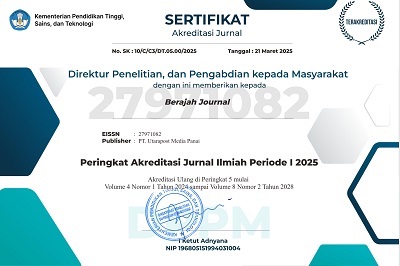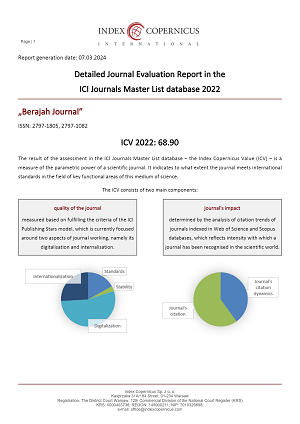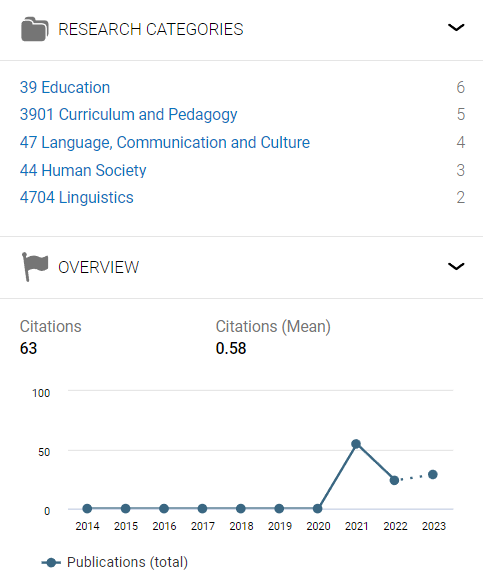THE ROLE OF TECHNOLOGY IN ENHANCING ENGLISH LANGUAGE LEARNING: A STUDY OF DIGITAL TOOLS AND THEIR IMPACT ON STUDENT ENGAGEMENT
DOI:
https://doi.org/10.47353/bj.v4i6.430Keywords:
Technology in Language Learning, Digital Tools, English Language Education, E-learning, Student EngagementAbstract
The rapid advancement of technology has significantly transformed the landscape of English language learning, offering learners innovative tools and platforms that enhance their engagement and comprehension. From mobile applications to online learning platforms, technology has opened new avenues for interactive and personalized language instruction. This paper explores the various ways technology has been integrated into English language learning and evaluates its impact on students’ learning outcomes, motivation, and engagement. Focusing on tools such as language learning apps, virtual classrooms, and interactive media, the study highlights the benefits of these technologies in creating an immersive and adaptive learning environment. Through a review of relevant literature and case studies, this research identifies key trends and best practices in using technology to support language acquisition. It also discusses the challenges associated with the adoption of technology, including issues of accessibility, teacher readiness, and digital literacy. The findings suggest that technology, when used effectively, can lead to improved learning outcomes by providing students with flexible, real-time feedback and fostering a more collaborative learning experience. Additionally, technology facilitates autonomous learning, allowing students to practice their language skills independently outside the classroom. However, the study also notes that successful integration of technology in language learning requires appropriate training for educators and careful consideration of learners’ individual needs.
Downloads
References
Aydin, S. (2013). Teachers’ perceptions about the use of computers in EFL teaching and learning: The case of Turkey. Computer Assisted Language Learning, 26(3), 214-233.
Beatty, K. (2010). Teaching and researching computer-assisted language learning. Routledge.
Blake, R. J. (2008). Brave new digital classroom: Technology and foreign language learning. Georgetown University Press.
Chapelle, C. A. (2003). English language learning and technology: Lectures on applied linguistics in the age of information and communication technology. John Benjamins.
Deterding, S., Dixon, D., Khaled, R., & Nacke, L. (2011). From game design elements to gamefulness: Defining “gamification”. In Proceedings of the 15th International Academic MindTrek Conference (pp. 9-15). ACM.
Duolingo. (2021). How gamification enhances language learning through mobile apps. Retrieved from https://www.duolingo.com
Egbert, J., & Hanson-Smith, E. (1999). CALL environments: Research, practice, and critical issues. TESOL Publications.
Erben, T., Ban, R., & Castañeda, M. (2009). Teaching English language learners through technology. Routledge.
Godwin-Jones, R. (2011). Emerging technologies: Mobile apps for language learning. Language Learning & Technology, 15(2), 2-11.
Hockly, N., & Dudeney, G. (2014). Going mobile: Teaching with handheld devices. Delta Publishing.
Levy, M. (1997). CALL: Context and conceptualization. Oxford University Press.
Metruk, R. (2020). The use of Duolingo app in the English classroom. Education and Information Technologies, 25(1), 4691-4712.
Park, C. N., & Son, J. B. (2009). Implementing computer-assisted language learning in the EFL classroom: Teachers' perceptions and perspectives. International Journal of Pedagogies and Learning, 5(2), 80-101.
Reinders, H., & Pegrum, M. (2017). Supporting language learning on the move: An evaluative framework for mobile language learning resources. TESL-EJ, 20(3), 1-24.
Selwyn, N. (2016). Education and technology: Key issues and debates. Bloomsbury Publishing.
Stockwell, G. (2012). Computer-assisted language learning: Diversity in research and practice. Cambridge University Press.
Thomas, M., Reinders, H., & Warschauer, M. (Eds.). (2013). Contemporary computer-assisted language learning. Bloomsbury Publishing.
Warschauer, M. (1996). Computer-assisted language learning: An introduction. In S. Fotos (Ed.), Multimedia language teaching (pp. 3-20). Tokyo: Logos International.
Warschauer, M., & Kern, R. (Eds.). (2000). Network-based language teaching: Concepts and practice. Cambridge University Press.
Zhang, S., & Zou, X. (2017). Virtual reality in language learning: A tool for immersion. International Journal of Learning Technology, 12(4), 256-271.
Downloads
Published
How to Cite
Issue
Section
License
Copyright (c) 2024 Fitri Handayani

This work is licensed under a Creative Commons Attribution 4.0 International License.




























